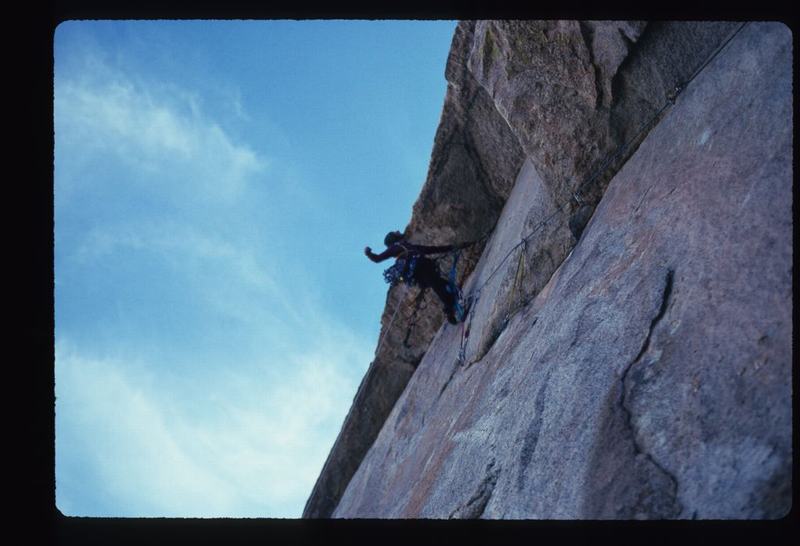
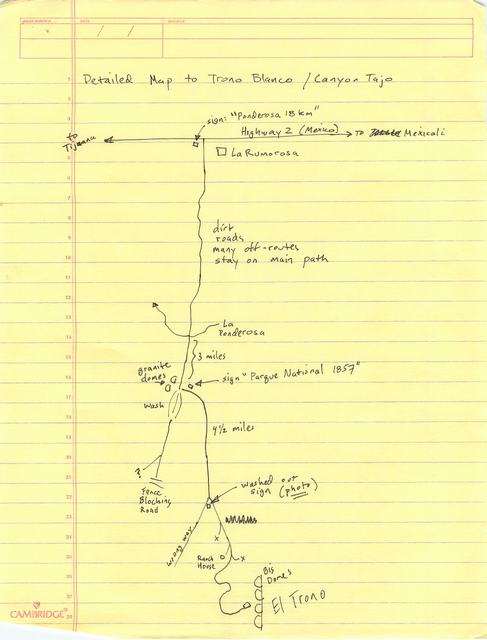
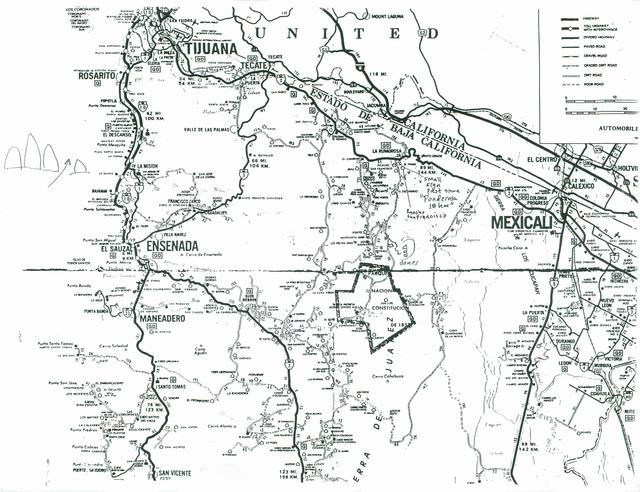
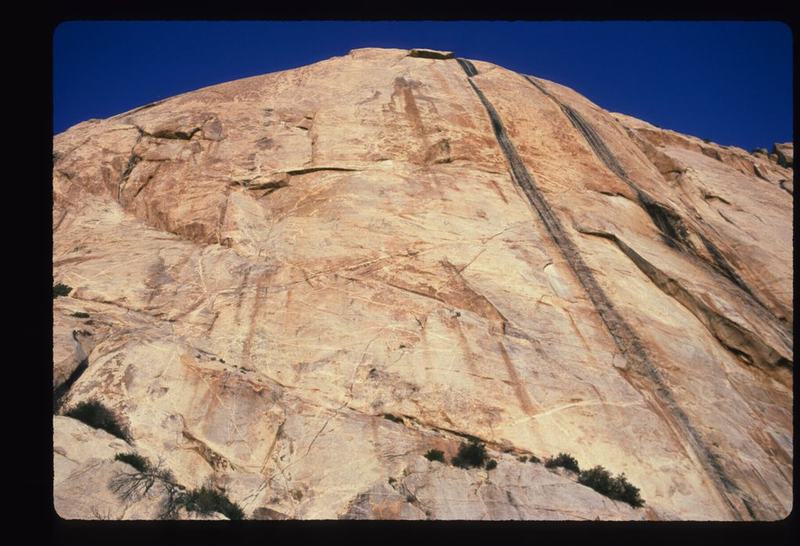
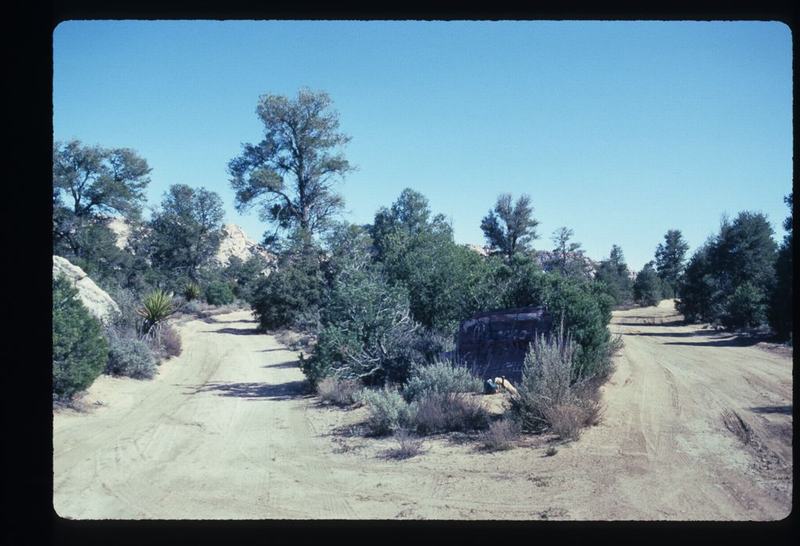
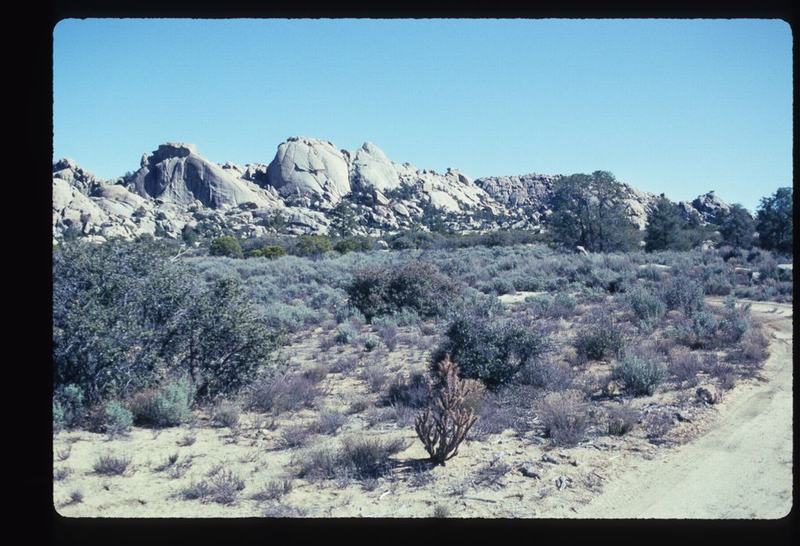
Jeff and I went with the possibility of establishing a new route on the face, although neither of us had ever set eyes on the face. I had sketchy information on the area from various people, including several widely varying versions of maps to the area, and a few topos of some of the routes: the Pan American, the South Face, and the Happy Hooker. We knew of the Giraffe only from a speculative line drawn on the photo from Baxter's article from someone who had once attempted the Pan Am route, and that John Long, Billy Westbay, and Hugh Burton had established it sometime in the early 70's.
It took us 2 full days driving on rough 4WD roads to find the area, which required many miles of wandering lost on unmarked roads which branched off everywhere. Our maps, at least a decade old, were of no use, as they referred to nonexistent roads and signs, and long changed temporal features like "fence" and "burned out area". Finally we solved the puzzle and approached the domes after spotting them from far away while reconnoitering after hiking to the top of a hill. With no information, the approach to the base was just as much a puzzle, and after picking one of many gullies just because "it felt right", we loaded up our gear and provisions for 5 days and went for it.
The descent down to the base can be described as nothing less than hellish. It requires wicked bushwhacking down vertical gullies thrashing around in a maze of monster sized boulders, with huge cliff drop-offs encountered at every turn. Each section of the way had to be first explored without the mondo haulbags we were each carrying, as a jump from one boulder to another could have serious committing consequences if the path led nowhere (which it often did).
After a full day of thrashing, we made it to the base, luckily finding water there, and scoped out the routes for the first time. The Pan American is an obvious corner system up the center of the face. It looks like it will eventually go all free. The Giraffe is on the left and steeper side of the wall, and is aesthetic in that it is the only viable line on the steeper, left side of the East Face of El Trono Blanco, and stands alone on a sea of granite. We quickly abandoned plans for a new route, and decided to go for an ascent of the Giraffe.
Each pitch of the route is excellent nailing, generally difficult (A3 and harder), and goes through some spectacular features and roofs. We were amazed at how the natural features linked up in such a way as to produce a continuous route. Below the top, as I was leading an aid corner that was becoming progressively more and more awkward and was leading into a wet and ugly section, I was about to yell to my partner Jeff that we finally had a stinker pitch, when I was suddenly able to step around the corner on a "thank god" horizontal ledge to moderate free climbing. The moment typified the climbing on the Giraffe: intimidating and improbable from afar, but all there up close.
From the summit, another major all-afternoon thrash through thick manzanita and around Goliath sized boulders and cliffs was required to get us back to the car. When we finally got back and out of there, the non-stop adventure of the past week was soon celebrated with some fine Mexican beers.





